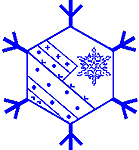 |
Jim FrankenfieldAvalanche Safety Courses and Services 1338 Foothill Dr. #170; Salt Lake City, UT 84108 |
| Choosing a Course | Qualifications | Courses | Photo Gallery | Guiding Page |
| Useful Avalanche Safety Information | ||||
Fall and Early Winter Avalanche HazardsOriginally prepared for Avalanche-Center.org. Fall and early winter do not see as many avalanche incidents as mid-winter or spring, but several are reported each year with one or two typically involving fatalities. It seems that many of the victims are simply not thinking about the potential, either because they generally travel in winter after there is more snow or because they think there is not yet enough snow to constitute a hazard. Frequently the people who get caught earliest in the season are not winter recreationalists but hikers, hunters, or others not accustomed to considering avalanche risks and terrain features conducive to avalanches. In November of 1998 a group of hikers was caught in the Canadian Rockies. The same month a hunter died in an avalanche in Montana where wind sheltered slopes at the time had only 14 inches of snow. In November of 1997 two would-be skiers decided to hike due to a lack of snow. One of them ended up dying in an avalanche. These avalanche incidents which occur earliest in the season usually result from an underlying assumption that there is not enough snow yet for an avalanche to occur. Snowfall is redistributed by wind, and some areas may have enough snow to slide even when adjacent ground is bare. The areas most likely to present a problem are gullies and steep high slopes which are shaded. Both of these features, if oriented so that the wind fills them with snow, can be hazardous. Gullies can often present additional hazards, worsening the potential consequences of a slide. Watch out for snow filled features which lie above rock bands and/or feed into steep sided areas like creek beds where the accumulation of sliding snow could be deep. It is often possible to avoid the potential hazard by a short detour around the terrain feature. When that is not possible it is best to use standard avalanche terrain travel practices, especially crossing the area one at a time with somebody watching the person crossing. As the winter progresses the most avid skiers and snowboarders begin to encounter avalanches. Many times in the earliest season skiing/boarding incidents the victims had to walk to get to a location with enough snow to ski or board. This leaves them with the impression that there is not enough snow to worry about avalanches. The very slopes these people seek for skiing or snowboarding are the ones which have been loaded by the winds - that's why the snow is there. In areas with a cold climate the earliest snow to accumulate in shaded areas can sometimes turn into weak sugary crystals called depth-hoar. New snow deposited on top of these crystals will be poorly supported. Skiers and snowboarders seeking early season pockets of snow should be able to assess the snowpack on their own, an avalanche advisory is unlikely to be available. They should also take the same precautions and carry the same safety equipment as they would later in the winter. Finally, there are sometimes close calls every year inside ski area boundaries before the area is open. Remember that prior to opening ski areas are neither controlled nor patrolled and are essentially backcountry. All risk is yours - travel accordingly! |
| |
HTML 4.01 Transitional Compliant - Validate